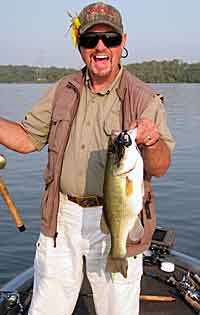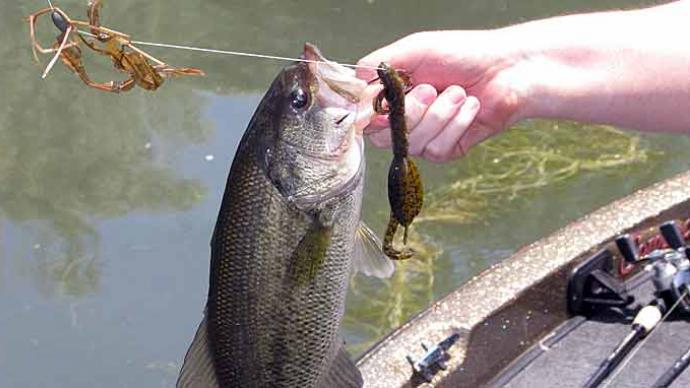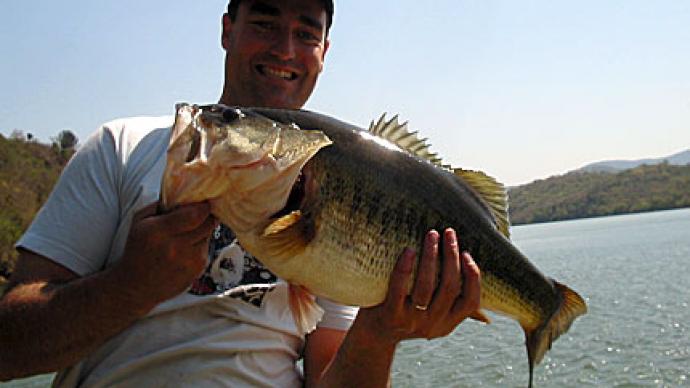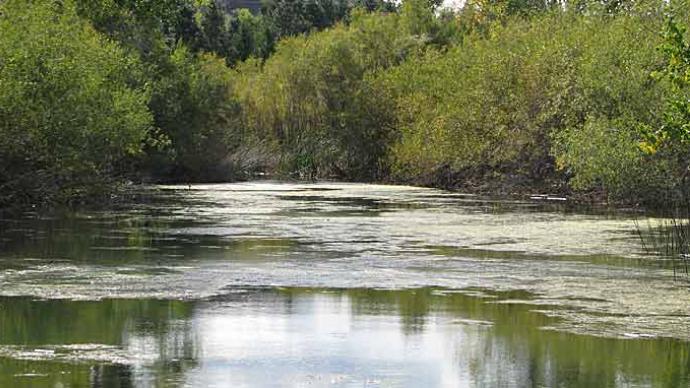
Where's the what? Where's the bass! How many of us bass anglers (tournament and recreational) go to a body of water you've never fished before, drop the boat in the water, then ask this question to yourself?
This is probably one of the most important topics in bass fishing that an angler should learn more about. I generally receive about two hundred (give or take) emails and phone calls each week from anglers and charter clients from all over the nation (even some from foreign countries) asking me many different bass-related questions. Out of all of these questions, I would have to say that about sixty-five percent of them would be on how to locate bass in their area or on a body of water that they have never fished before.
I would comfortably say that locating bass and understanding the water would be the number one topic among bass anglers today. The next most asked question would be which baits they should use to catch "big" bass.
When you think about it, there are only two main topics that go hand-in-hand when it comes to bass fishing. If you understood more about these two, you would become a much better angler, and they are:
- Knowing how to locate bass.
- Knowing how to catch bass using different techniques, presentations, and baits.
Learning how to locate bass can be somewhat of a challenge to most anglers because there are so many different factors that need to be determined, such as:
- Knowing how to read a map.
- Knowing the most suitable places to look for "Active Bass" just after cold fronts and during early spring and late fall periods.
- Understanding water depth.
- Water clarity.
- Water temperatures.
- Seasonal patterns.
- Locating structure areas.
- Finding vegetation areas.
There are more! Being a consistent bass angler is so much more than just getting in your boat, hitting the water, and casting your baits. That's why bass tournaments are so competitive and exciting because the more you learn about locating bass, the quicker you can start catching them, right? And hey, isn't that half the battle?
Let's start by looking at a lake map. Most anglers will use two general lake maps - the "Hot Spot" and the "Topographical" maps. The difference between the two is that a "Topo" map shows more detail, and the "Hot Spots" map shows more fishing spots (well, at least they're supposed to).
The secret, or key, in learning how to use a lake map would be to sector the map. I mean that I'll take the map and study it for a moment, looking for areas where the fish would most likely be. Next, I'll divide the map into sections using a highlighter, based on how much time I have to pre-fish for a tournament or how many days I have to fish the body of water for fun. The size of the sections will vary depending on contours, structure, and how many places I may want to check out during the day based on what the map shows me. I am certainly not one to just cast a bait into the water and work it for five minutes and leave. I'll try an assortment of baits if I see signs of fish in any given area to establish a working pattern.
Here are some key elements I usually look for when it comes to locating bass on any given body of water:
- Vegetation areas.
- Irregular contours.
- Shallow water close to deep water areas.
- Points and point drops.
- Various types of structure.
Let's take the first one: VEGETATION. This is by far my favorite because you will usually find more congregated bass in vegetation than anywhere else on the whole body of water. Remember, a bass needs three things to survive: food, oxygen, and cover (or structure). That's it, and vegetation offers it all! Now, you might be thinking, "Well, what if there's no vegetation?" Then go to the other elements 2, 3, 4, and 5 mentioned above.
Correct me if I'm wrong, but how many of you anglers fish the weed lines and never go amid the weeds? I can't tell you how many times I'll go to weedy areas to see other anglers fish the outside weed lines for a while and then watch them move on. After they pull away from the outside weed area, I will pull the boat up into the midst of the weeds (in the same areas where these other anglers were fishing) and start catching bass -- usually nice quality ones.
I have known many anglers over the years that have just hated to pull up weeds, or they don't like when they get weeds on their boat carpets or in their boats, or they get tired of picking the weeds off their hooks. Well, guess what? I'll suffer through these bothersome weeds any day of the week because that's where you'll usually find the bass in numbers.
Some baits and techniques can be tricky to use when fishing weeds. I won't go into them right now, but keep in mind that weeds (especially when you find several different types of vegetation in one area) are by far my number one choice to fish than all the other areas combined. One of the best places you'll find bass would be in vegetation areas, especially if you have different types of structure in the weeds, and even better yet if this weedy, structured area is close to where the shallow water meets the deep water. Boy-O-Boy! Hold on! Try it; you'll like it!
Now, if you can't find any vegetation areas on your body of water, then look for the structure. The structure can consist of many different things like:
- Rip-Rap (chunk rock areas)
- Overhangs (where tree branches hang over the water)
- Docks
- Stumps
- Irregular contours
- Rocky areas
- Road beds
- Ditches
So really, just about anything other than the flat, smooth bottoms that offer nothing at all (which are a waste of time to fish anyway) would be considered as structure areas.
I hope this article has given you better insight into what to look for when locating bass. I know that what I have shared with you certainly helps me, and I hope it can help you!




